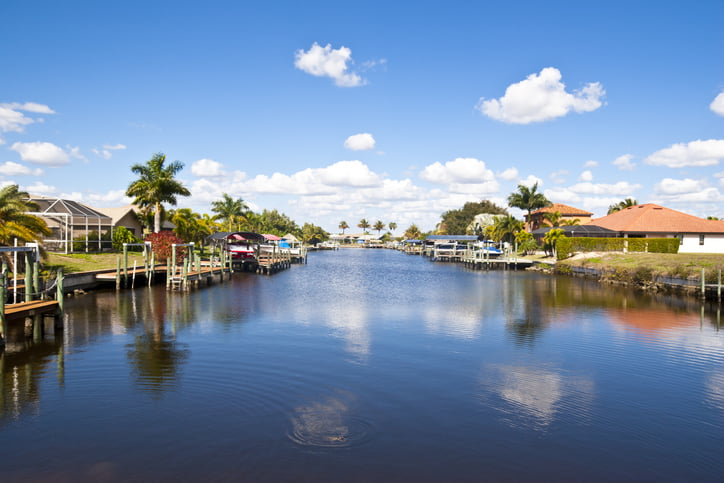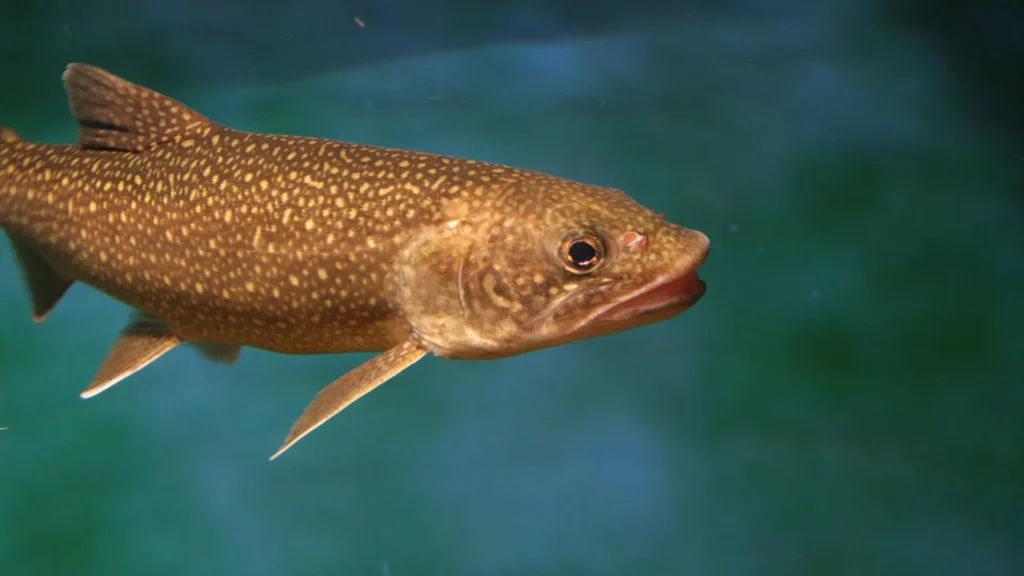(Photo from Siegella | pixabay.com)
Florida, celebrated for its sunny climate, houses diverse ecosystems teeming with unique freshwater fish species, contributing to the state’s biodiversity. Transitioning into the specifics, Florida fish enthusiasts engage in freshwater fishing, targeting iconic species like redear sunfish. Moreover, the term “Florida freshwater fish” resonates with anglers, hinting at the diverse and exciting opportunities awaiting in the state’s water bodies. The allure of Florida’s freshwater fishing experience lies in the chance to encounter and appreciate the beauty of redear sunfish amidst the state’s vibrant aquatic tapestry. Whether exploring lakes, rivers, or ponds, the diversity of Florida’s freshwater fish promises an engaging and rewarding experience for anglers of all levels.
The Diverse World of Florida Freshwater Fish
Florida’s aquatic ecosystems host diverse freshwater species, enticing enthusiasts for Florida freshwater fishing adventures in lakes, rivers, springs, and ponds. Transitioning to the diverse inhabitants, game fish like the iconic largemouth bass add excitement to the state’s waters. These species contribute to Florida’s visual splendor, creating a colorful aquatic tapestry in freshwater environments.
Moreover, the allure of Florida freshwater fishing draws anglers seeking thrilling encounters with game fish in the Sunshine State’s vibrant underwater world. Casting lines in the diverse waters promises exciting challenges and rewarding experiences for enthusiasts exploring Florida’s picturesque aquatic landscapes.
Largemouth Bass: The Iconic Florida Predator
One cannot discuss Florida freshwater fish without highlighting the largemouth bass. Renowned for its formidable size, this predatory species dominates water bodies across the state. Anglers are drawn to Florida’s lakes and rivers, enticed by the prized catch—the largemouth bass, scientifically named Micropterus salmoides floridanus.
Moreover, fishing enthusiasts flock to diverse locations, including Ochlockonee River, Apalachicola River, and Lake Okeechobee, to pursue various species such as spotted sunfish. Additionally, the Florida Museum showcases the rich aquatic diversity, featuring species like channel catfish, white catfish, and blue catfish.
In addition, the Apalachicola River and Ochlockonee River present opportunities for anglers seeking spotted sunfish. Lake Okeechobee is renowned for its diverse aquatic life, including the elusive flathead catfish. Anglers exploring Florida’s water bodies discover a paradise, with each location offering unique fishing experiences.
The Lure of Fishing for Largemouth Bass in Florida
Anglers flock to Florida’s freshwater havens, seeking the elusive largemouth bass. In diverse water bodies, capturing trophy-sized bass captivates fishing enthusiasts worldwide. Additionally, the St. Johns River, known for Florida largemouth bass, is a hotspot for bass fishing.
Further south in Florida, fisheries management commitment ensures sustainable practices, fostering the abundance of largemouth bass and other freshwater fish, including chain pickerel. The allure of bass fishing extends beyond local anglers, attracting enthusiasts to experience the thrill in South Florida’s diverse aquatic landscapes.
Exotic Intruders: Cichlids in Florida Waters
Transitioning to exotic inhabitants, Florida’s freshwater landscapes host cichlid species, introduced by aquarium hobbyists, adding a tropical flair to ecosystems. Among these, the popular peacock cichlid exemplifies the interconnectedness of Florida’s aquatic environments with the global aquarium trade. Further exploring Florida’s lakes, from Central Florida to Florida Bay, reveals established populations of diverse cichlid species.
These colorful fish, thriving in Florida’s sunshine, are a captivating testament to the unique intersection of aquatic environments and global aquarium interests. Additionally, small fish serve as bait, contributing to the varied diet of cichlids in Florida’s vibrant water bodies.
The presence of these introduced species in Florida’s lakes showcases the ongoing dynamics between aquarium enthusiasts, local ecosystems, and the flourishing cichlid populations.
The Impact of Exotic Cichlids on Florida’s Native Ecosystems
While exotic cichlids enhance aesthetics, their introduction raises ecological concerns, impacting local ecosystems and competing with native Florida freshwater fish. Additionally, biologists and conservationists diligently work to understand and manage the consequences of exotic cichlid populations. Transitioning to angling dynamics, using lures for black bass and sunshine bass offers exciting opportunities amidst Florida’s waters.
Sunfish Splendor: Florida’s Native Color Palette
(Photo from makabera | pixabay)
Florida’s sunfish enrich aquatic diversity. The bluegill’s iridescence and longear sunfish’s patterns create a natural palette, adding vibrancy to freshwater habitats. Transitioning to other nongame fish, redbreast sunfish stand out in Florida’s diverse waters. Moreover, in coastal ecosystems, saltwater fish diversify the aquatic tapestry, showcasing the state’s rich biodiversity.
Exploring the Diverse Sunfish Varieties in Florida Waters
Enthusiasts savor Florida’s diverse sunfish, from the widespread bluegill to the elusive warmouth. Transitioning to specific waters, the Ochlockonee River features spotted sunfish. Additionally, the Florida Museum showcases various species, including channel catfish and white catfish.
Transitioning further, the Apalachicola River and Lake Okeechobee attract anglers with flathead catfish. Observers appreciate the vibrant colors of redbreast sunfish and the unique characteristics of each sunfish species.
Moreover, Florida’s conservation commitment ensures the protection of sunfish populations and the state’s aquatic heritage. In coastal ecosystems, saltwater fish contribute to the rich biodiversity. Further exploring Florida’s waters, the Florida gar, with its distinctive appearance, adds to the state’s diverse aquatic life.
Conservation Challenges for Florida Freshwater Fish
Florida’s freshwater fish face threats from human activities, habitat loss, and environmental changes. Additionally, specific species, like channel catfish, white catfish, and blue catfish, confront heightened risks. Observing these challenges, the Florida Museum plays a vital role in understanding and addressing the conservation needs of Florida’s aquatic inhabitants.
Despite these threats, ongoing efforts aim to mitigate the impact of human activities and ensure the well-being of Florida’s diverse freshwater fish.
The Role of Conservation Initiatives in Protecting Florida’s Freshwater Fish
Safeguarding Florida’s freshwater ecosystems involves restoring habitats, regulating fishing practices, and educating the public. Moreover, focusing on specific species, like clown knifefish and spotted bass, highlights the diverse inhabitants of Florida’s lakes. Conservation initiatives ensure the resilience of native fish populations, preserving Florida’s aquatic biodiversity for future generations.
Balancing Human Recreation with Fish Conservation
Furthermore, as Florida attracts residents and tourists alike with its picturesque water bodies, achieving a balance between recreational activities and fish conservation becomes imperative. In essence, sustainable practices and responsible angling ensure the continued enjoyment of Florida’s freshwater fish for generations to come.
Springs and Rivers: Hubs of Florida’s Aquatic Life
Nestled in Florida’s landscape, freshwater springs and rivers are crucial hubs for aquatic life. Moreover, manatees, turtles, and various fish species thrive in these clear, nutrient-rich waters, forming intricate ecosystems.
The Importance of Springs in Sustaining Florida Freshwater Fish
Florida’s springs like Ichetucknee and Wakulla serve as vital refuges for Florida freshwater fish. Additionally, these crystal-clear waters support diverse native species, contributing to Florida’s ecological tapestry.

The Everglades: A Unique Habitat for Florida’s Freshwater Fish
Moreover, in the Everglades, expansive wetlands and slow-moving waters host a distinctive array of freshwater fish. From the resilient mosquito fish to the secretive Florida gar, the Everglades showcase the adaptability of Florida’s aquatic inhabitants.
Navigating the Challenges of Conservation in the Everglades
Furthermore, shifting to conservation challenges, the Everglades confronts threats like invasive species and altered water flow patterns. Ongoing efforts focus on restoring its natural balance, ensuring the survival of unique Florida freshwater fish within this iconic ecosystem.
Challenges and Opportunities in Florida’s Fishery Management
(Photo from cottonbro studio | pexels.com)
In essence, considering the dynamics of fishery management, Florida plays a pivotal role in balancing ecological health and angler interests. Sustainable practices and science-based regulations guide the responsible use of freshwater resources, ensuring the well-being of Florida freshwater fish populations.
Achieving Sustainable Fisheries through Responsible Practices
Additionally, moving to the pursuit of sustainable fisheries, Florida freshwater fish management strives to achieve balance. Considering factors such as fish populations, habitat health, and angler engagement, science-based decision-making ensures the longevity of freshwater fishery resources.
The Future of Florida Freshwater Fish: A Call to Conservation Action
Conclusively, with a glimpse into the future, Florida’s freshwater fish beckon conservation action. Iconic species like Florida largemouth bass, chain pickerel, and bass fishing opportunities in South Florida underscore the need for responsible stewardship.
Additional Tips!
- Preserve Habitats: Safeguard Florida’s freshwater habitats to ensure the well-being of diverse aquatic species.
- Practice Responsible Angling: Engage in ethical fishing practices to support sustainable fisheries and protect fish populations.
- Stay Informed: Stay updated on regulations and conservation initiatives to contribute to the protection of Florida’s aquatic ecosystems.
- Educate Others: Share knowledge about the importance of responsible fishing and conservation practices with fellow anglers and enthusiasts.
- Support Conservation Efforts: Contribute to or participate in local conservation projects to actively promote the longevity of Florida’s freshwater fish.
Additional Resources:
1. sustainable fisheries – https://www.iberdrola.com/social-commitment/sustainable-fishing#:~:text=Sustainable%20fishing%20respects%20marine%20ecosystems,or%20those%20without%20commercial%20value.
2. Everglades – https://en.wikipedia.org/wiki/Everglades
3. Florida’s springs – https://www.visitflorida.com/things-to-do/outdoors-and-adventure/natural-springs/
4. freshwater ecosystems – https://en.wikipedia.org/wiki/Freshwater_ecosystem#:~:text=Freshwater%20ecosystems%20are%20a%20subset,have%20a%20larger%20salt%20content.
5. coastal ecosystems – https://www.sciencedirect.com/topics/earth-and-planetary-sciences/coastal-ecosystem#:~:text=A%20coastal%20ecosystem%20includes%20estuaries,coastlines%20and%20the%20adjacent%20lands.


